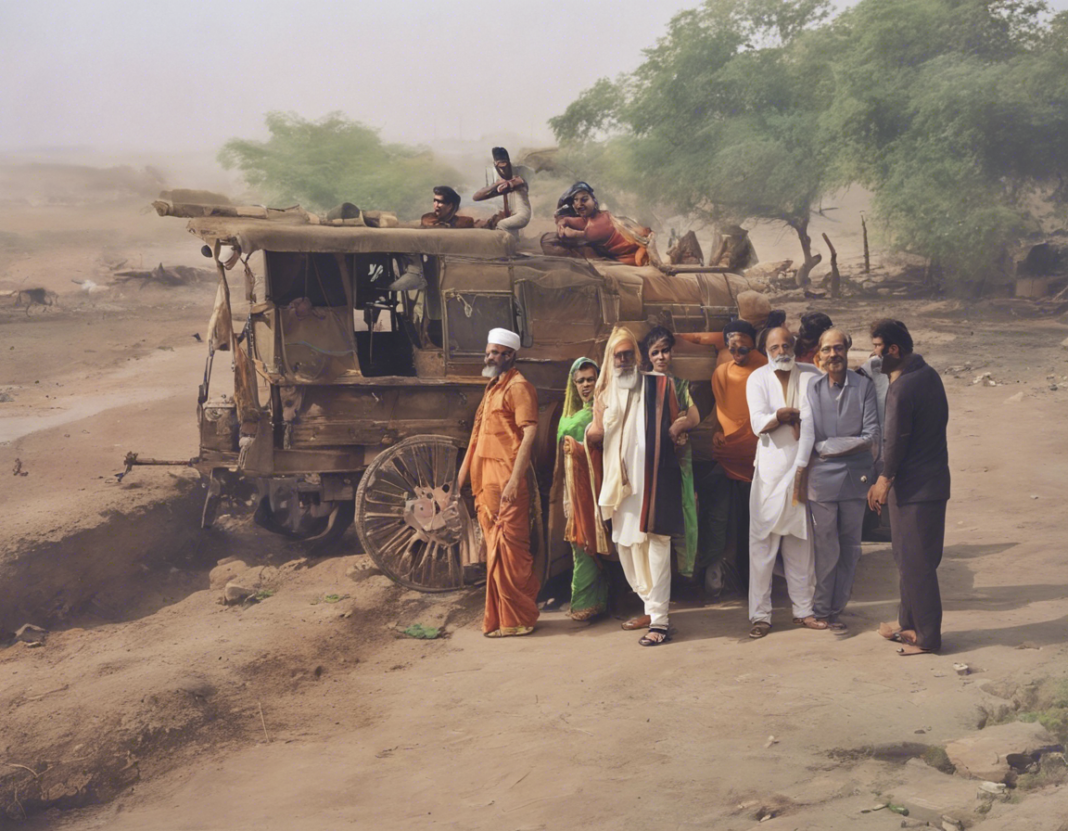Located in Ajmer, Rajasthan, India, Adhai Din Ka Jhonpra is a fascinating monument that holds historical significance and architectural beauty. The name itself is intriguing, translating to “shed of two and a half days”. Built in the 12th century, this structure has a rich history that dates back to the medieval period of India.
Historical Background:
The history of Adhai Din Ka Jhonpra is shrouded in mystery and legends. According to popular belief, it was originally a Sanskrit college built by King Visaldeva in the 11th century. However, it was later converted into a mosque by Sultan Ghori in just two and a half days, hence the name.
Architecture and Design:
The monument boasts a unique blend of Hindu and Islamic architectural styles, reflecting the cultural amalgamation that took place during that era. The exterior is adorned with intricate designs, inscriptions, and arches, showcasing the artistic prowess of the craftsmen of that time. The interiors are equally mesmerizing, with pillars, domes, and ceilings that leave visitors awe-struck.
Influence of Islamic Architecture:
The transformation of the structure into a mosque brought about significant changes in its design and layout. The inclusion of Islamic architectural elements such as mihrabs, minarets, and Quranic inscriptions added a new dimension to the building. The intricate latticework and calligraphy further showcase the influence of Islamic art and culture on the monument.
Preservation Efforts:
Over the centuries, Adhai Din Ka Jhonpra has undergone various renovations and restoration works to preserve its cultural heritage. The Archaeological Survey of India has played a crucial role in maintaining the integrity of the monument and ensuring that it remains accessible to visitors and researchers alike.
Significance and Legacy:
As one of the oldest surviving mosques in India, Adhai Din Ka Jhonpra holds immense historical and cultural significance. It stands as a testament to the syncretic nature of Indian society, where different faiths and traditions coexisted and influenced each other. The monument serves as a reminder of the rich tapestry of India’s heritage and the architectural marvels of the past.
Visit to Adhai Din Ka Jhonpra:
If you ever find yourself in Ajmer, a visit to Adhai Din Ka Jhonpra is a must. The monument’s imposing facade and intricate details will transport you back in time to an era of artistic brilliance and cultural fusion. Take a stroll through its corridors, marvel at its architecture, and soak in the historical ambiance that pervades the site.
Conclusion:
Adhai Din Ka Jhonpra stands as a symbol of India’s diverse cultural history and architectural excellence. Its unique blend of Hindu and Islamic styles, coupled with its rich historical background, make it a must-visit destination for history enthusiasts and architecture lovers alike. As you explore the corridors and chambers of this magnificent monument, you’ll be captivated by the stories etched in its walls and the beauty that transcends time.
Frequently Asked Questions (FAQs):
Q1: What is the significance of Adhai Din Ka Jhonpra?
A1: Adhai Din Ka Jhonpra is a historic monument that represents the cultural fusion of Hindu and Islamic architectural styles. It serves as a testament to India’s diverse heritage and artistic excellence.
Q2: Who built Adhai Din Ka Jhonpra?
A2: The original structure was built by King Visaldeva, but it was later converted into a mosque by Sultan Ghori in the 12th century.
Q3: What can visitors expect to see at Adhai Din Ka Jhonpra?
A3: Visitors can explore the intricate designs, arches, inscriptions, and Islamic architectural elements such as mihrabs and minarets at the monument.
Q4: Is Adhai Din Ka Jhonpra open to the public?
A4: Yes, Adhai Din Ka Jhonpra is open to the public and welcomes tourists and history enthusiasts to explore its premises.
Q5: Are there any restrictions for visitors at Adhai Din Ka Jhonpra?
A5: Visitors are required to adhere to preservation guidelines and regulations set by the authorities to maintain the integrity of the monument.
Q6: Can photography be done at Adhai Din Ka Jhonpra?
A6: Photography is generally allowed at the monument, but it is advisable to check with the authorities for any specific restrictions or guidelines.
Q7: What is the best time to visit Adhai Din Ka Jhonpra?
A7: The best time to visit Adhai Din Ka Jhonpra is during the cooler months of October to March, when the weather is pleasant for sightseeing.
Q8: Is there an entry fee to visit Adhai Din Ka Jhonpra?
A8: Yes, there is a nominal entry fee for visiting Adhai Din Ka Jhonpra, which may vary for domestic and international tourists.
Q9: Are there guided tours available at Adhai Din Ka Jhonpra?
A9: Yes, guided tours are available for visitors who wish to learn more about the history and architecture of Adhai Din Ka Jhonpra from knowledgeable guides.
Q10: Can weddings or events be hosted at Adhai Din Ka Jhonpra?
A10: Special events like weddings or other functions are generally not permitted at Adhai Din Ka Jhonpra to ensure the preservation of the monument’s heritage and significance.




